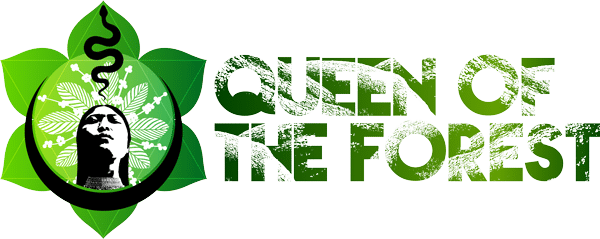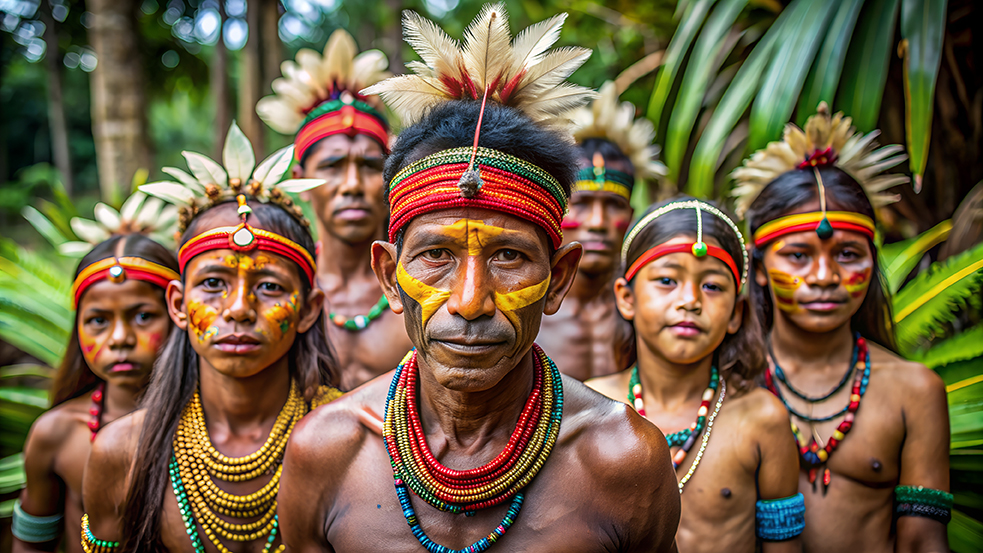Forest People, FOREVER THE FOREST
Protecting Amazon Sustainability Plan
Empowering Indigenous Communities to Save the Amazon
Why: Indigenous peoples are the traditional guardians of the Amazon and have lived sustainably within it for centuries. Supporting their land rights is key to forest conservation.
Actions:
- Strengthening Legal Rights: Indigenous communities need robust legal recognition to protect their lands from deforestation and exploitation. Governments must prioritize granting and enforcing land titles.
- Funding Support: Provide financial and technical assistance through international funds and NGOs to help Indigenous communities maintain sustainable lifestyles and play central roles in decision-making processes.
- Education Initiatives: Share Indigenous knowledge globally through media and educational campaigns. Highlight their expertise as stewards of the forest and the importance of their traditions for global sustainability.
The Forest as a Way of Life
For Indigenous peoples, forests represent more than resources. They are sacred spaces deeply tied to cultural identities, spiritual practices, and ancestral heritage. By living in harmony with their environment, Indigenous communities exemplify sustainable coexistence with nature. Studies confirm that areas managed by Indigenous peoples often show significantly lower rates of deforestation compared to government or privately controlled lands.
Creating Sustainable Economic Opportunities
Why: Economic pressures, such as agriculture, mining, and logging, drive much of the Amazon’s deforestation. Providing alternative livelihoods is essential to mitigating this destruction.
Key Strategies:
- Supporting Eco-Friendly Businesses: Foster enterprises that sustainably utilize forest resources, such as non-timber products like Brazil nuts, açaí, and medicinal plants.
- Promoting Ecotourism: Develop ventures like wildlife tours, cultural exchanges, and rainforest lodges to generate income without harming the environment.
- Carbon Credits and Certifications: Encourage projects that reward conservation efforts through carbon markets and sustainable certifications, such as Fair Trade or Rainforest Alliance.
Education and Awareness Campaigns
Why: People are more likely to protect what they understand and value. Changing global mindsets can foster collective commitment to preserving the Amazon.
Key Initiatives:
- Global Media Campaigns: Create captivating social media content, documentaries, and digital platforms to highlight the Amazon’s critical role in planetary health.
- Curriculum Integration: Incorporate environmental education about the Amazon into school programs worldwide, emphasizing its importance in climate regulation and biodiversity.
- Influencer Partnerships: Collaborate with celebrities, athletes, and thought leaders to advocate for rainforest protection and inspire global audiences.
Implementing Stronger Environmental Policies
Why: Robust legal frameworks and enforcement are crucial to reducing deforestation and holding corporations accountable.
Actions:
- Transparent Land-Use Laws: Governments must implement and enforce strict policies against illegal deforestation.
- International Agreements: Utilize platforms like the UN and G20 to establish multilateral accords that penalize entities contributing to Amazon destruction.
- Sustainable Agriculture Incentives: Redirect subsidies from destructive practices like cattle ranching to support sustainable farming methods.
Promoting Reforestation and Regeneration Projects
Why: Protecting forests is vital, but restoring degraded areas can help recover biodiversity and ecosystem functions.
Strategies:
- Native Reforestation Projects: Invest in tree planting initiatives focused on native species, engaging local communities in the restoration process.
- Agroforestry Systems: Encourage farming practices that integrate forest management, combining food production with ecological benefits.
- Community-Led Management: Empower local communities to take ownership of reforestation efforts, ensuring sustainable outcomes.
Incentivizing Sustainable Consumption
Why: Consumer demand significantly contributes to environmental degradation. Encouraging sustainable habits can alleviate pressure on the Amazon.
Key Approaches:
- Product Labeling: Implement clear labeling systems to inform consumers about the environmental impact of products, particularly in sectors like beef, soy, palm oil, and timber.
- Eco-Conscious Consumer Movements: Launch campaigns encouraging consumers to choose sustainable goods and reduce demand for deforestation-linked products.
- Corporate Accountability: Hold companies responsible for their supply chains, ensuring zero-deforestation practices.
Creating Global and Local Partnerships
Why: Addressing Amazon deforestation requires collaborative efforts across governments, corporations, NGOs, and communities.
Collaborative Actions:
- Alliances for Sustainability: Build partnerships to develop solutions balancing economic development with environmental protection.
- International Climate Funds: Encourage developed nations to invest in sustainable development projects that protect the Amazon.
- Corporate Engagement: Work with corporations sourcing Amazon products to adopt sustainable practices and commit to zero-deforestation supply chains.
Fostering a Global Mindset Shift
Why: Long-term protection of rainforests depends on humanity’s ability to rethink its relationship with nature.
Strategies:
- Deep Ecological Education: Promote global understanding of the interconnectedness between humans and ecosystems, emphasizing that protecting forests is essential for survival.
- Cultural Narratives: Use storytelling, art, and media to cultivate a sense of responsibility and wonder for the natural world.
- Community Engagement: Foster grassroots movements that encourage sustainable lifestyles and local conservation efforts.
Harnessing Technology for Conservation
Why: Innovative technologies can revolutionize monitoring and protecting the Amazon.
Key Tools:
- Satellite Monitoring: Utilize real-time satellite imagery and AI analytics to detect illegal activities such as logging and land clearing.
- Blockchain for Transparency: Use blockchain technology to trace the origins of products, ensuring sustainability in supply chains.
- Conservation Apps: Develop mobile platforms enabling individuals to support rainforest preservation, such as adopting portions of the Amazon or donating to projects.
Engaging Youth and Building Global Movements
Why: The future of the Amazon depends on empowering younger generations to lead the charge.
Initiatives:
- Youth Education Programs: Support initiatives that teach young people about climate action and Amazon conservation.
- Global Forums for Youth Leadership: Create platforms for young leaders to strategize and advocate for rainforest protection.
- Connecting with Movements: Align efforts with global youth-driven campaigns like Fridays for Future to amplify impact.
This comprehensive strategy addresses both the immediate threats to the Amazon rainforest and the long-term need for a global cultural shift. By empowering Indigenous communities, fostering sustainable economic opportunities, strengthening policies, and leveraging technology, we can create a sustainable future for the Amazon. Ultimately, the Amazon’s survival depends on our collective action to honor its vital role in our planet’s health and humanity’s future.


